Posted by Dan on 15th Jan 2024
Pre & Post Track Session Best Practices
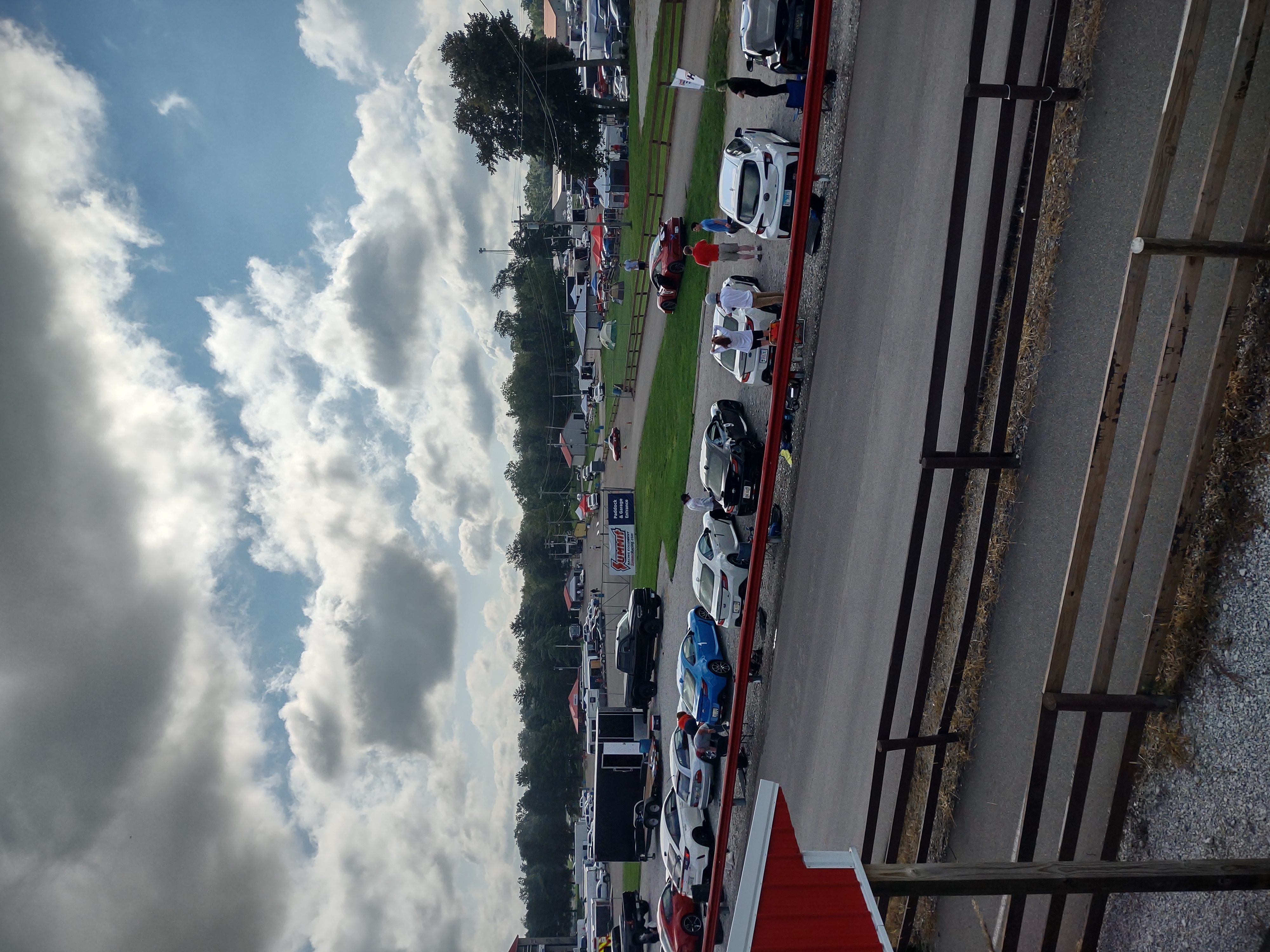
Figure 1: GR crowd at Mid-Ohio
Topic Intro:
Over the years of doing track days, time trials, and driver clinics the team at GR Performance parts has developed some best practices for Pre and Post Track sessions. This Tech Tuesday is going to focus specifically on at the track Pre and Post Session Best Practices. There are Pre and Post Track Day activities that will appear in another Tech Tuesday article, please see that in addition to this article. Many of these best practices have saved us track time and have spared us from track incidents. We hope that you at the very least consider accepting these into your best practices Pre and Post track session.
Pre-Session:
- Check and adjust tire pressure
- Before all of your sessions you should check your tire pressure to ensure that you are going out on track with safe and recommended tire pressures. As this is not a deep dive into what tire pressure you should be running that information will not be provided here. However you should be checking your tire pressure before each session and making sure that it is at a pressure you are expecting or desiring. This will help you to get the best performance out of your tires, prevent tire failure, and provide the best longevity for the tires.
- Make sure lug nuts are torqued (especially before and after first session)
- Your lug nuts are the only thing holding your wheels onto your car. Make sure that they are torqued to the factory recommended torque spec. There are various times and reasons when you may have your wheel(s) off your car. You do not want to go out on track with a loose wheel and run the risk of having a wheel fall off. If you do not have a torque wrench to check this at the track ask someone or at the bare minimum aim to check that your wheels are secure with the factory provide tire iron. It is almost a guarantee that someone at the track has a torque wrench that you can borrow. We have forgotten our torque wrench in the past and the instructors and staff running the event always have one to borrow.
- Clean windshield
- Dirt or debris on the windshield will limit or affect your vision. Try to improve your vision and remove distractions when possible.
- Make sure that your car is empty of loose items
- You don't want anything loose in the car flying around when you are driving hard. This includes floor mats that can be a hazard if they flip up and get stuck on the pedals.
- Make sure no fluids are dripping below the car.
- This is self-explanatory but no fluids should be leaking from your car prior to your sessions. Leaking fluids can make the track surface extremely slick and is a hazard to you and other drivers. If you are leaking fluid you may run low on that fluid and have a failure on track when pushing your vehicle. These fluids also make a mess of your car so make sure everything is sealed. Coolant, oil (engine, trans, diff), power steering, and brake fluid are all fluids you should check for leaks.
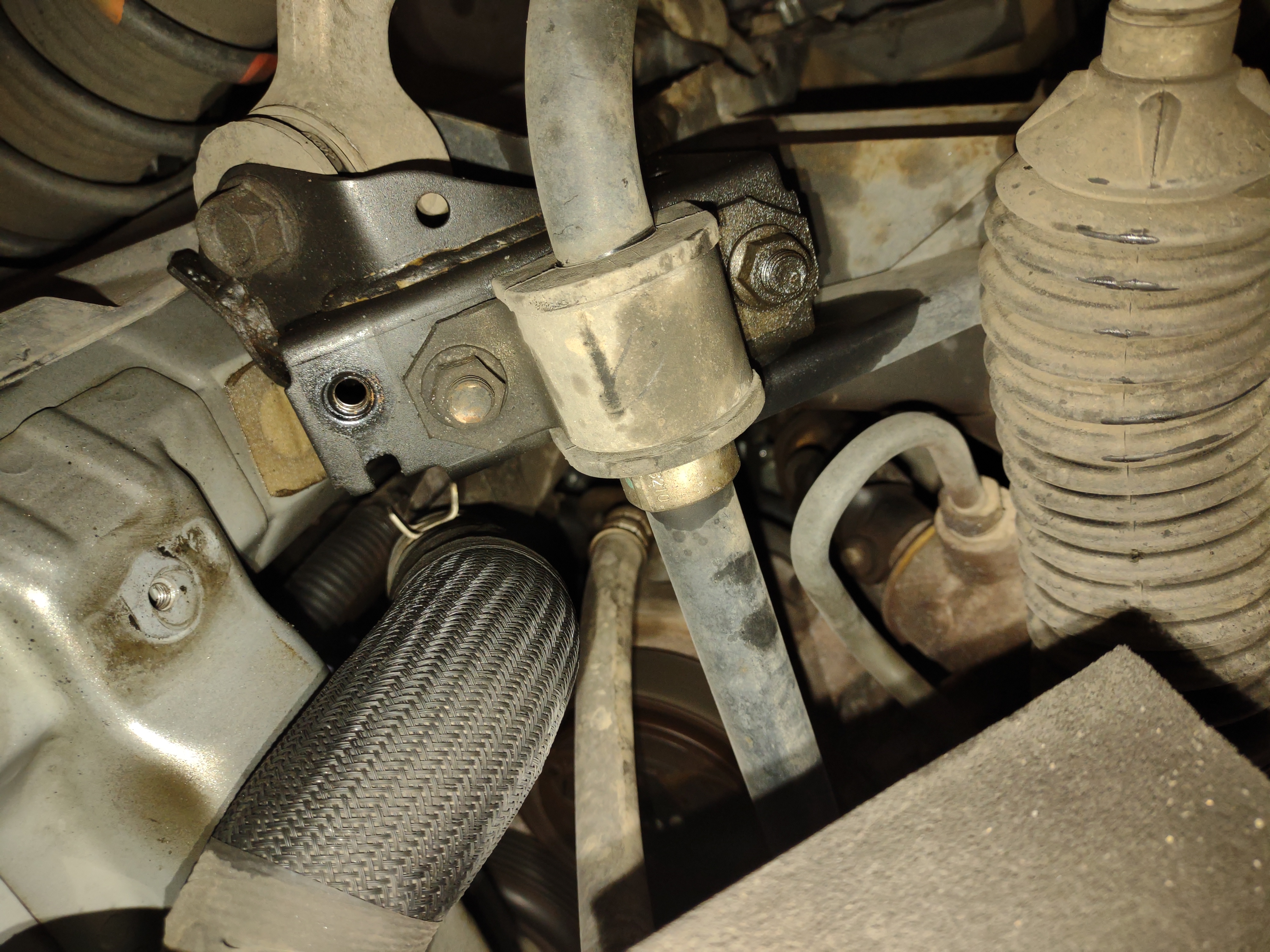
Figure 2: Mysterious fluid marks on underside of the car post session. Something is leaking. Turned out to be power steering fluid cap not being tightened and sealed.
- Give a quick look under the hood (no leaks or
loose items)
- Looking under the car is good for inspecting for leaking fluid but you should also do the same under the hood. You may have an early leak that has not yet made its way to the ground yet. It is also good to put eyes under your hood to make sure noting is loose or rattling around. Check when the car is running to also listen to the engine.
- Check oil level
- Make sure that the oil is topped off on the dip stick. Track use is hard on your engine oil and cornering forces can cause the oil in the sump to slosh from side to side. Ensuring that it is topped off will help to prevent oil starvation. Depending on the vehicle it can be advisable to overfill the oil slightly. You should do your research and see if this is applicable to your vehicle for track use. Do not excessively overfill your oil. Excessive overfilling will cause aeration of the oil and reduce its effectiveness. Some vehicles will also burn some oil during track use so do not be surprised if you need to top off your oil.
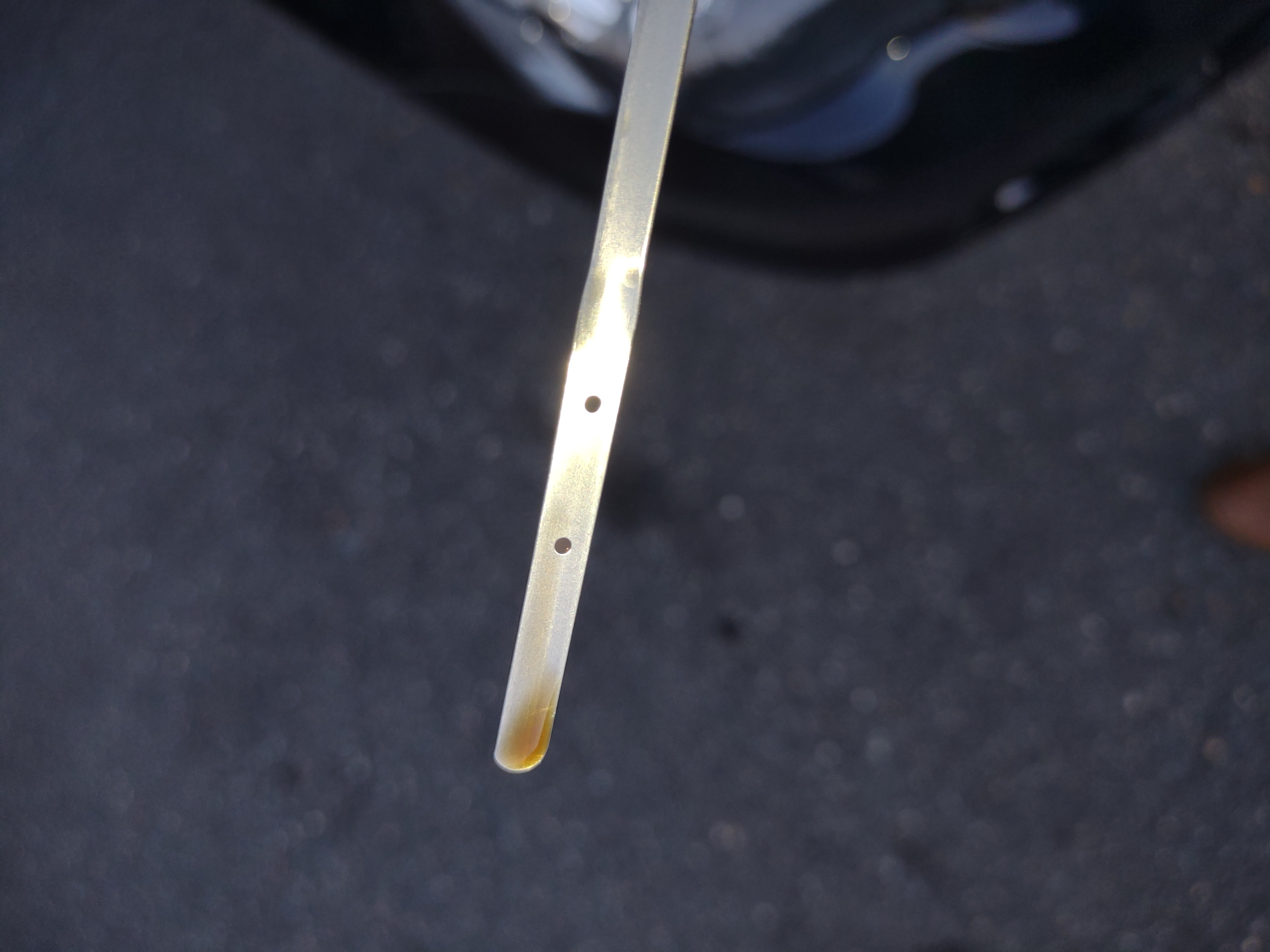
Figure 3: Buddies oil level after a day of tracking. Got lucky and motor survived despite oil level being consistently below the low dot post track day.
- Pick one thing to work on during the session ahead
- Track time has a cost and you should be getting the most out of your track time. If you are tracking for enjoyment wonderful, try to enjoy the experience as much as possible. If you are trying to explore a particular aspect of your car (power, handling, grip, brakes, etc) track time is a great use for that. If you are interested in lap times think about what you can do to improve your lap times. If you know you as a driver are deficient in a particular aspect of driving or a corner try and work on that during a session. Tracking is about learning and having fun whiles staying safe. Use your time and track time expense with intent and get out of it what you are looking for.
- Check brake rotors for any potential cracking and
health of the brake system
- This is a big one. I cannot stress enough how a good and fully functional brake system is when you go on a race track. It is the most critical system of the car for your safety besides the cars safety systems. I am not going to get into fluid or pads to use here. However regardless of what kind of fluid or pads you are using CHECK YOUR BRAKE SYSTEM BEFORE YOUR SESSINONS! The last thing you want is to learn that you do not have brakes at the end of a straight away. What do you want to check? Make sure the fluid is topped off, make sure you have brake pad remaining on all 4 corners of the car, make sure your rotors are in good health (not cracked or damaged), make sure that there is no stone or debris in between the brake pads and the rotors, make sure all of the brake lines are intact and not damage or leaking, and make sure that you have a proper and consistent brake pedal. If you do upgrade brakes and fluid consider track focused pads and a fluid such as Motul 660.
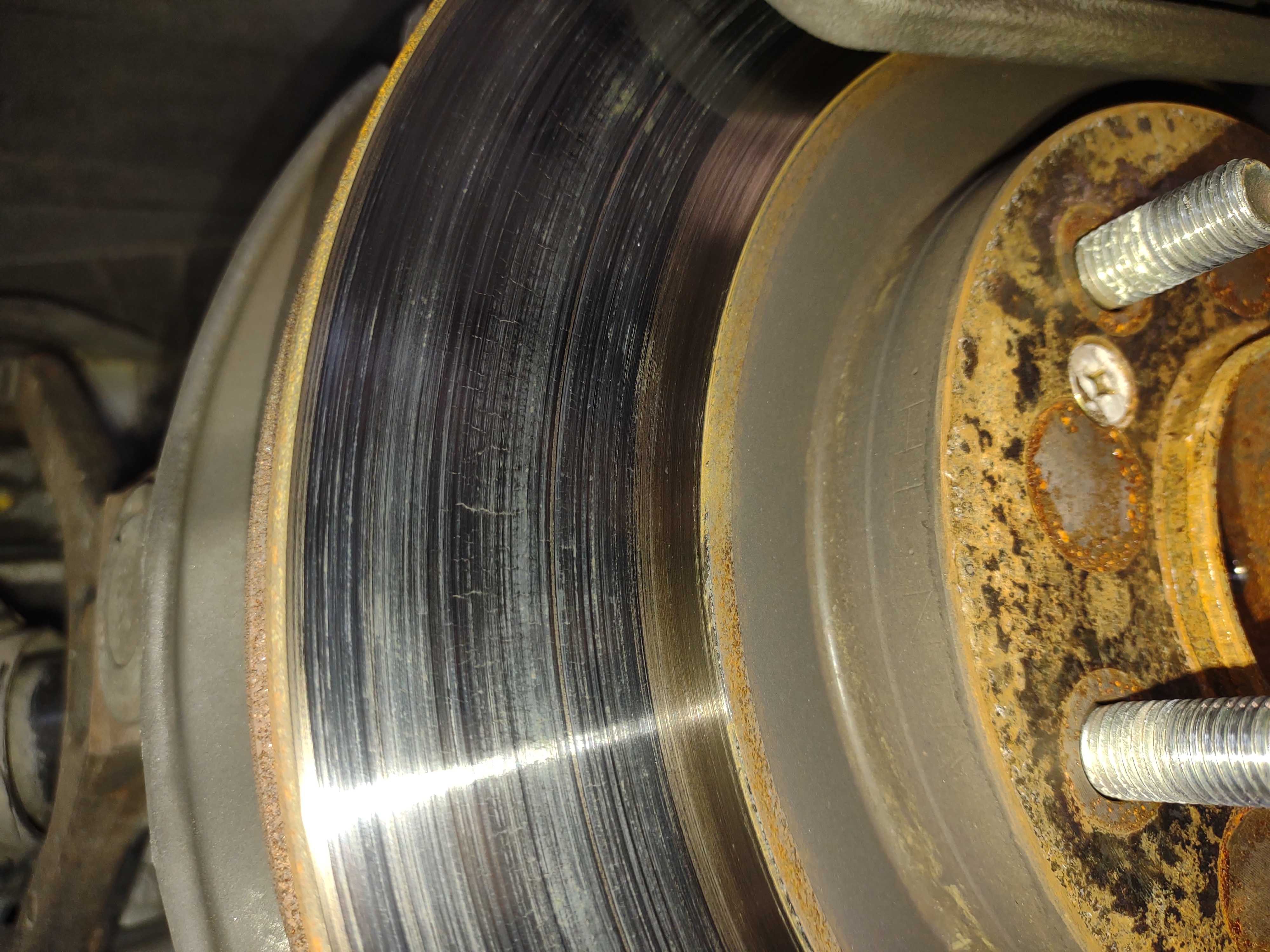
Figure 4: Onset of cracking found in the rotors post session. When cool run a finder nail over any expected crack. Micro crack like above not a major concern but keep an eye out for any major cracks in the rotor.
- Make sure you have a solid brake pedal and fluid
is filled/at correct level
- Did we mention brakes and ensure that the system is in good health? Be conscious of the brake pedal feel at all times.
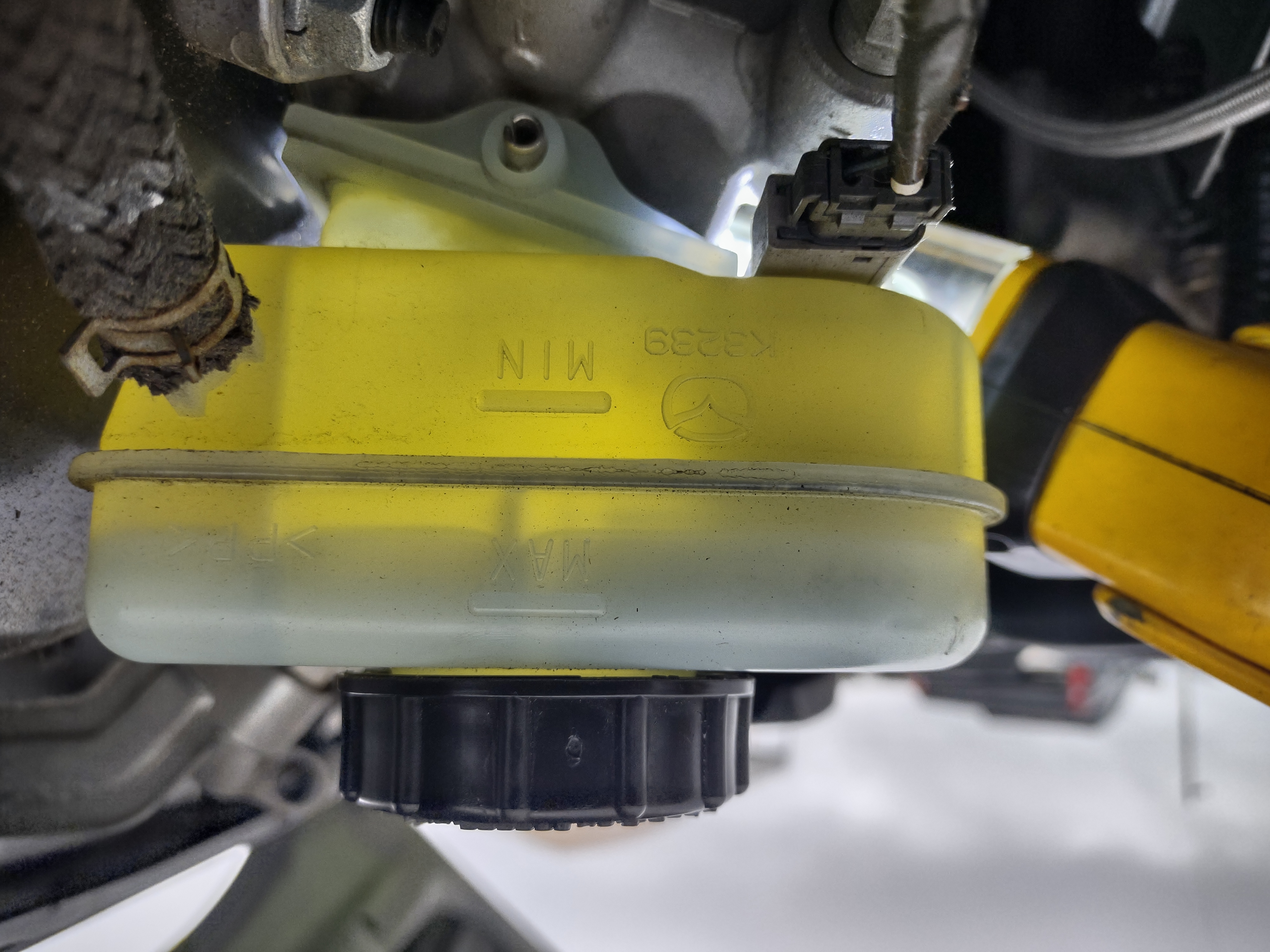

Figure 5: Brake fluid above measure at same spot in paddock after a session. Left pre-session. Right post-session. Notice the fluid difference? Time to start looking for a leak.
Post-Session:
- Pyrometer the tires (record values)
- A pyrometer is a device that can be used to measure the interior rubber temperature of your tires. We are not going to go into how to use it or what your readings should be. If you have one, know how to use it, and are concerned about maximizing tire performance it is a useful tool that we utilize post session.
- Check tire pressure
- This was already mentioned for a pre-session item but that was a reading of cold tire pressure. You should also be checking tire pressure post-session to know what your hot tire pressures are at. Again, not going into what your tire pressures should be but make sure that you are checking them pre and post session and ensuring that the tire pressure is at a safe and acceptable value. Consult the vehicle tire pressure recommendation and tire manufacture for additional information as needed.
- Retorque your lug nuts
- Yes this was done pre-session but it should also be done post-session. Your wheels will go through heat cycles during a session and track day. Your lug nuts can loosen a bit after a heat cycle it is a good idea to make sure you are at the recommended torque spec after your session. It is a good idea to still check your lug nut torque before your next session in case you removed the wheel for an reason.
- Visually inspect tires
- Tire pressure and pyrometer measurements are not a guarantee to tell the full story about your tires. Learn how to read a tire and see what portion of the tire is getting the most wear and highest heat input. It is also great to get eyes on the entire tire. A tire can begin to fail or split without warning from your tire pressure or pyrometer readings.
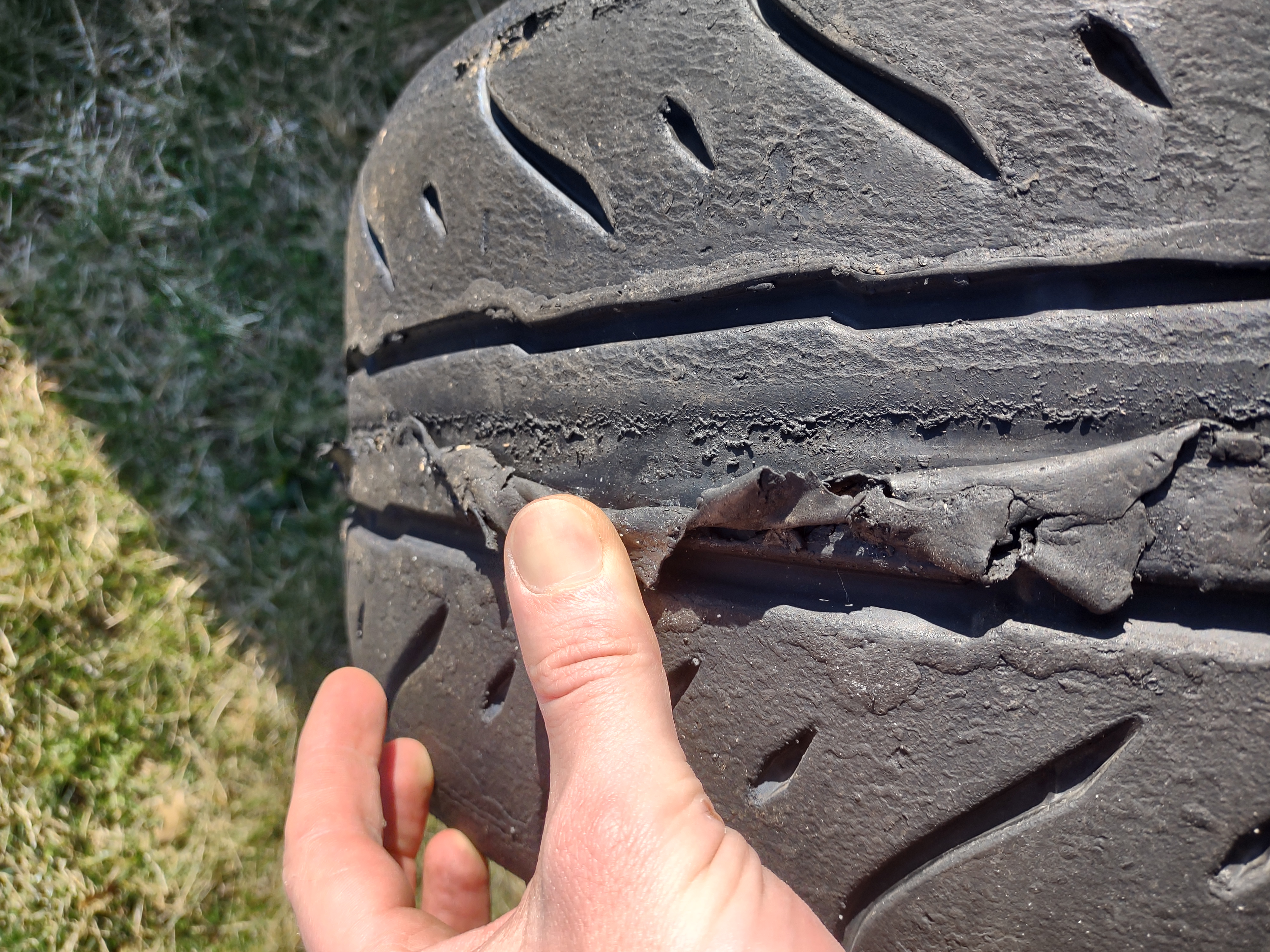
Figure 6: Delaminating tire found post session. Healthy and proper pressures. Turned out to be a manufacturing defect with lot of tires.
- Leave the car running to continue to circulate
coolant and to listen to the car.
- Especially in the summer your car will get very hot during a session. Even though your cooling system’s gauge is reading fine you may want to do a cool down lap in the paddock or leave your car running. Leaving it running will keep coolant circulating and the fans running. It is not all that different than if you were going for a run in the heat of summer. Give yourself a moment to cool down as well as your car. Also consider popping your hood to get even more heat out of the engine bay. Bonus you will get to look under the hood and see how everything looks. If you are going to leave your car running and in neutral make sure to chuck the wheels of your car. Do not let your car roll without away without a driver in it.
- Don't pull hand brake or hold the brakes after
your session
- When you come in from a session your brakes will be extremely hot. If you hold the brakes or pull the E-brake the brake pads can fuse themselves to the extremely hot rotors and cause various issues such as boiling of the fluid or warping rotors. When we bring a car it we like to put the car in neutral and have a wheel chuck right next to where we park. You can chock the wheels with the car in neutral and no E-brake on while going through your other post session checks.
- Pop the hood to get heat out
- Look again for fluid under the car
- Much like you did pre-session. Take a look post-session when the car is hot to make sure no leaks are occurring when the car is at temperature.
- Look for anything out of place or leaking in the engine bay
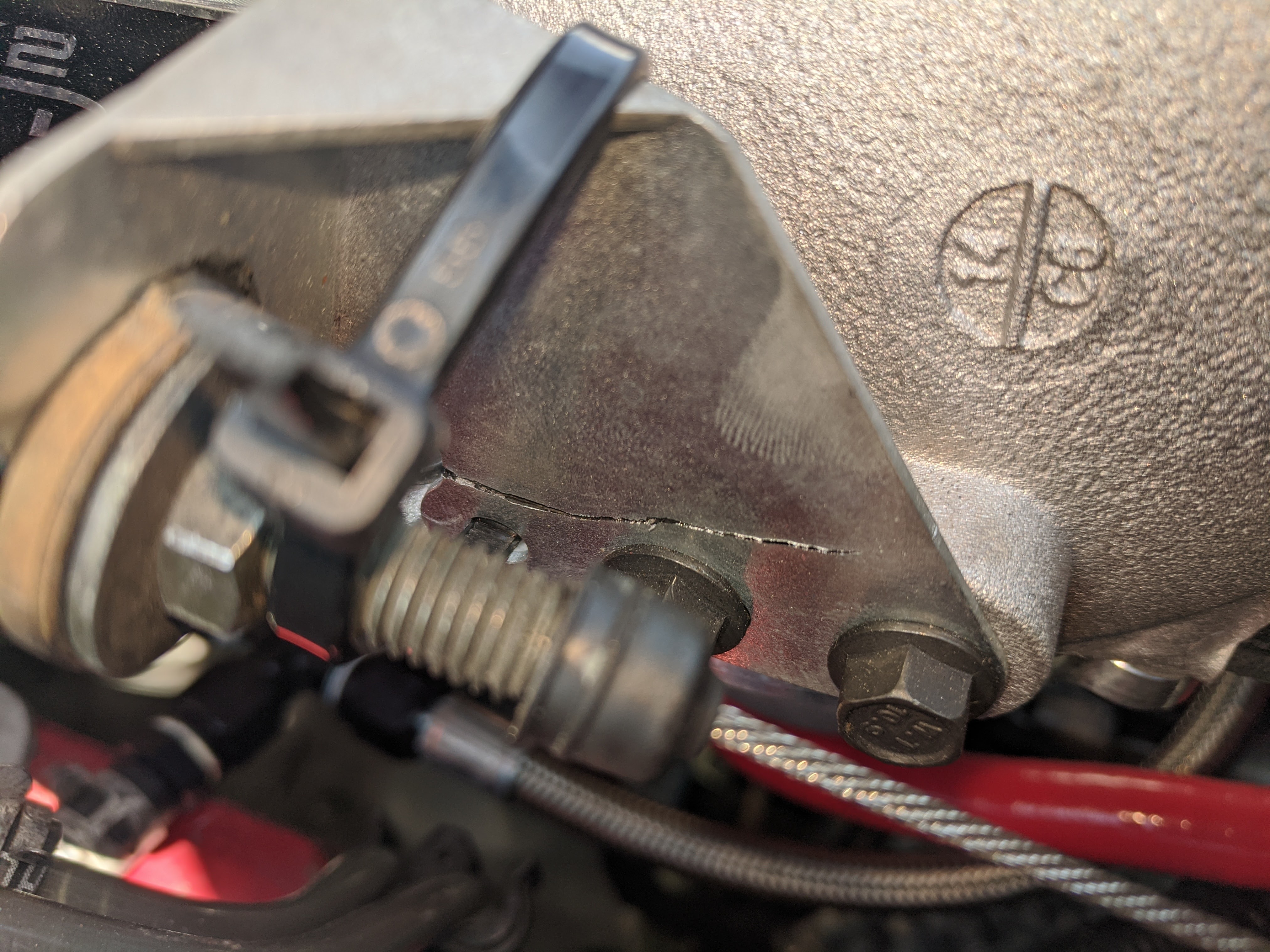
Figure 7: Cracked throttle cable bracket found after session.
- Take note of how the brake pedal behaved at the
end of the session.
- It is nice to access the brake pedal performance as you are coming off the track when the brakes are hot. Don’t hold the brakes too long because you want to give them time to cool but do take note of the pedal and brake performance.
- Record some thoughts about the session
- What went well during the session? How did the car perform? How did you perform? What did you learn or work on during that session? Anything come to mind to work on for the next session? How were the track conditions? etc
- Drink a bottle of water (check yourself and how
you are feeling or performing).
- Driving on track can be extremely fatiguing both physically and mentally. The saying “Check yourself before you wreck yourself”, can be very true when tracking. How are you feeling? Make sure you drink a bottle of water between sessions even if it is not extremely hot. Are you tired or is your performance on track suffering for some reason or another. At the end of a hot day if you finish up your second to last session and your performance is suffering there is no shame in taking your car home like you brought it. Loosing out on ~20 minutes of track time is much better then having an incident in your last session. FYI the last session of the day is the most accident prone be careful and safe with yourself and around others during the last session.
Final Comments:
Tracking your car can be the most rewarding and fun experience you can have in your ownership. It is also a better venue to be exploring your car and your limits than on the street. These best practices for pre and post session are items that we have learned over the years from first hand experience. Many of these best practices have saved us and our from incidents on track. Anything from a delaminating tire to personal fatigue can take away from your track experience. This is a hobby and experience that attentiveness and preparation can make all the difference. We hope to see you out at the track and hope that you find these items helpful.

